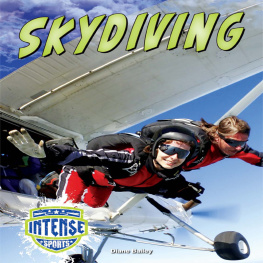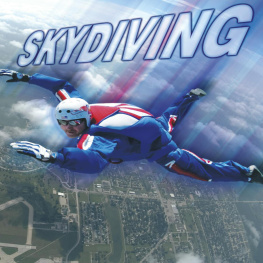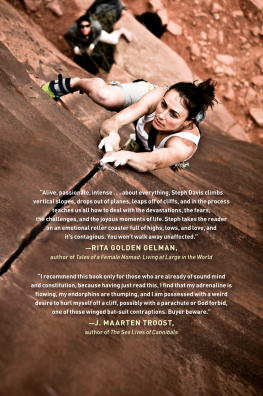Table of Contents
Guide
SKYDIVING
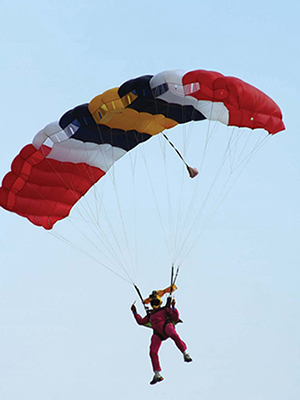
Diane Bailey

rourkeeducationalmedia.com | 
Scan for Related Titles
and Teacher Resources |
Before & After
Reading Activities | Level: NWord Count: 3,295 Words 100th word: skydiving |
Before Reading:
Building Academic Vocabulary and Background Knowledge
Before reading a book, it is important to tap into what your child or students already know about the topic. This will help them develop their vocabulary, increase their reading comprehension, and make connections across the curriculum.
Look at the cover of the book. What will this book be about?
What do you already know about the topic?
Lets study the Table of Contents. What will you learn about in the books chapters?
What would you like to learn about this topic? Do you think you might learn about it from this book? Why or why not?
Use a reading journal to write about your knowledge of this topic. Record what you already know about the topic and what you hope to learn about the topic.
Read the book.
In your reading journal, record what you learned about the topic and your response to the book.
After reading the book complete the activities below.
Content Area Vocabulary
Read the list. What do these words mean?
acrobatics
altimeter
altitude
antenna
canopy
descent
freefall
paratroopers
rectangular
rigger
right-of-way
ripcord
synchronized
tracking
After Reading:
Comprehension and Extension Activity
After reading the book, work on the following questions with your child or students in order to check their level of reading comprehension and content mastery.
How does the parachute design affect the skydiver? (Asking questions)
Explain how the de-arch position and head-down position work with air to make a diver go slower or faster. (Visualize)
What are the similarities and differences between a parachute and a wingsuit? (Summarize)
How do divers steer their body when falling? (Summarize)
Would you go skydiving? Explain. (Text to self connection)
Extension Activity
Skydivers rely heavily on their parachutes. A diver needs a chute that creates resistance and allows a slow fall to the ground. Design a parachute by using a plastic bag, scissors, string, and a small object to act as the diver, such as an action figure or plastic army man. Cut out a large square from the plastic bag. Trim the square into a design you think would work best. Cut a small hole near the edge of each side and thread the string through the holes. Attach the string to the object you chose as the diver. Using a chair or another high spot, drop your parachute. Did it fall quickly or slowly? Did it tangle? Remember you want it to fall slowly. Make adjustments to your parachute as needed and test again.
INTO THE SKY!
N ancy Koreen felt a little nervous. No wondershe was about to jump out of a plane! Nancy had skydived many times, but this time was special. She was part of a team of women preparing to do a group skydive. There were 63 of them all together, in three different planes.
In a few moments, the doors of the planes would open and the women would jump. Then they would try to join hands as they dove down at 160 miles (257.5 kilometers) per hour. If they did it, they would set a world record in skydiving. To succeed, everyone had to be perfectly at the same time. They had less than a minute to get it right.
The door opened and the howling wind hit Nancys body. It was loud and cold. She didnt care, though. The clock was ticking. It was time to make history! She took a deep breath, and jumped into the sky.

GETTING STARTED
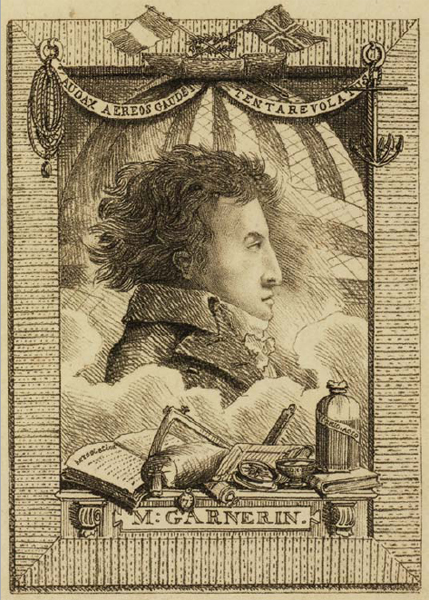
Andre-Jacques Garnerin (17691823)
I n the late 1700s, Andre-Jacques Garnerin did not have much to do. He had been captured during the French Revolution. Now he was stuck in prison. To pass the time, he dreamed of making a parachute. In 1797, after he got out of prison, he set to work. He made a parachute out of a big piece of white canvas, more than 20 feet (6 meters) across. Then he attached a basket to it. He rode in a balloon to take him high above the ground, and took his parachute with him. When he reached 3,200 feet (975 meters), he floated down in a basket as the parachute opened above him. People liked this new way of flying. They used balloons to parachute all through the 1800s. A new sport was born!
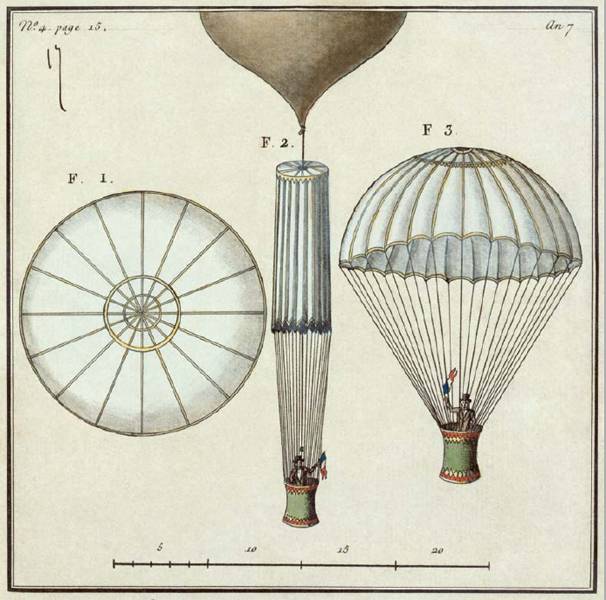
Inspired
Leonardo da Vinci was a famous artist and scientist in the 1400s. He drew a sketch of a parachute, but never built it. In 2000, a skydiver named Adrian Nichols decided he would make da Vincis parachute. It was made from canvas, wooden poles, and rope. Then Nichols tested it. It worked!
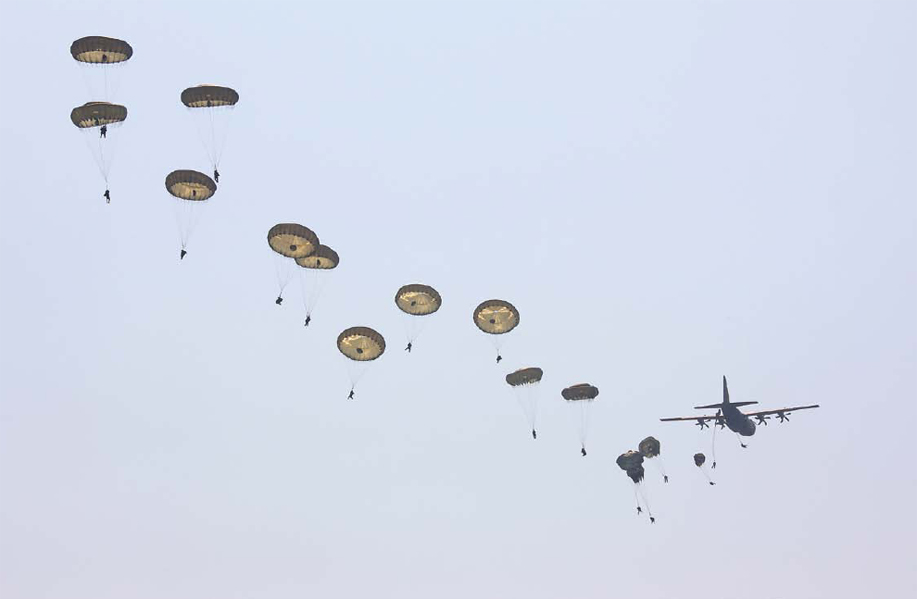
These modern skydivers head toward the ground the same way that World War II soldiers did.
Airplanes were invented in the 1900s. They flew higher and faster than balloons did. Airplane shows were popular in the 1920s. Parachutes were part of the entertainment. Crowds loved to watch them. World War II started in 1939. There was a new use for parachutes. Soldiers used them to jump out of airplanes. They flew directly into battle zones. These
The war ended in 1945. Soldiers did not need parachutes anymore. There were still a lot of them laying around! Some people decided to parachute just for fun. In the 1950s, the jumper Raymond Young gave the sport a new name. He called it skydiving. Through the 1960s and 1970s, schools opened to teach skydiving. People held competitions. Parachutes got better and safer. More people tried it. Today, there is a group called the United States Parachute Association (USPA). It estimated that skydivers made more than three million jumps in 2014. Thats a lot of air time!
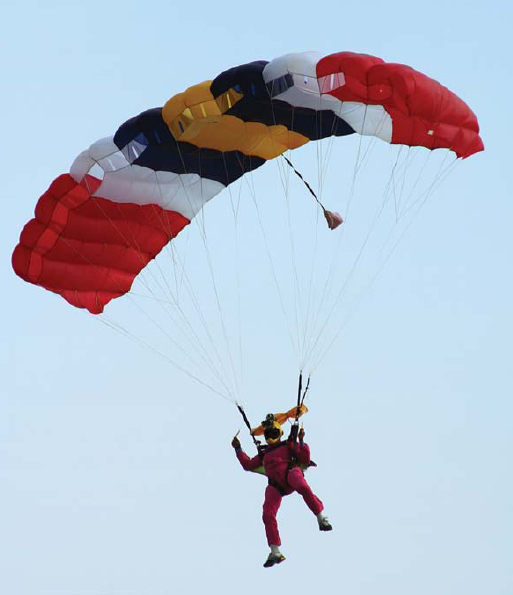
Todays parachutes are more like wide wings than round-topped bags.
Surfs Up
The surf is way up in skysurfing way up in the air! Skysurfers attach a board to their feet. It is shaped like a surfboard, but is smaller. As the skydivers fall, they catch the wind just like surfers catch waves.
Imagine being able to dance or do gymnastics in the air. Skydivers have about a minute before they open their parachutes. This such as loops, flips, and turns. Two or more skydivers can dance with each other in a midair ballet.

